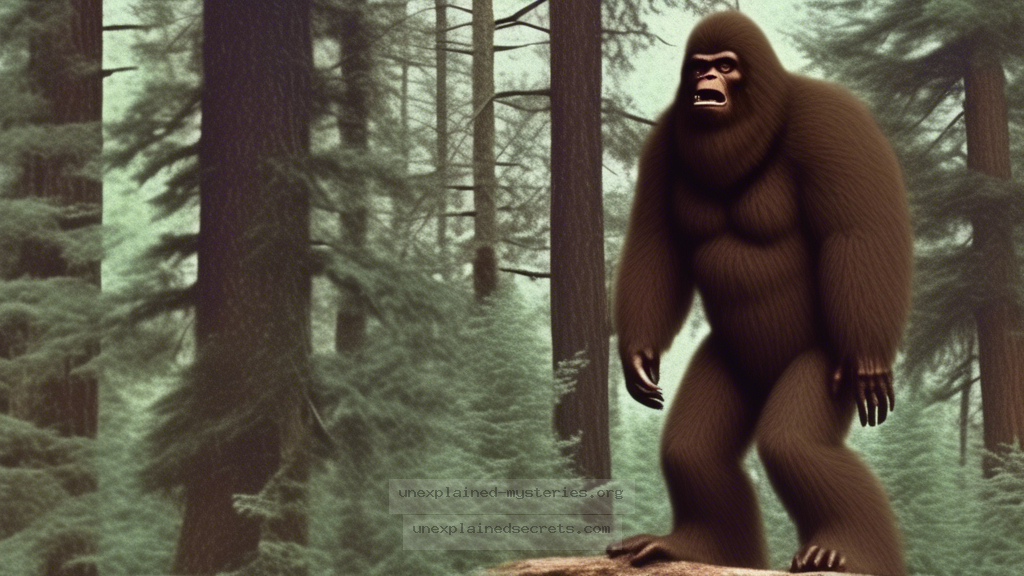What Does the Patterson-Gimlin Film Reveal About Bigfoot’s Existence?
What Does the Patterson-Gimlin Film Reveal About Bigfoot’s Existence?
The Patterson-Gimlin film, captured in 1967, remains one of the most debated pieces of evidence in the field of cryptozoology. For decades, it has sparked intense discussions among believers, skeptics, and researchers regarding the existence of Bigfoot. This question is crucial because it not only pertains to the authenticity of the film but also impacts the broader understanding of cryptids and their place in our world. With varying opinions and interpretations, it sets the stage for exploring the implications of its analysis and the ongoing quest for the truth behind this enigmatic creature.
Historical Context of the Patterson-Gimlin Film
The Patterson-Gimlin film was shot on October 20, 1967, in Bluff Creek, California, by Roger Patterson and Bob Gimlin. The two men were avid Bigfoot enthusiasts and were conducting an expedition when they encountered a creature that would change the landscape of cryptozoology forever. The film lasts for approximately 59.5 seconds and shows a large, bipedal figure walking across a sandbar. The footage, which is grainy and shaky, has sparked both intrigue and skepticism since its release.
At the time, the 1960s were a period ripe for cryptid sightings and folklore surrounding Bigfoot. The film came at a time when the public’s interest in mysterious creatures was peaking, largely due to reports from the Pacific Northwest and surrounding areas. This historical context is essential as it highlights the cultural backdrop against which the film was produced, influencing public perception and subsequent investigations.
Core Concepts Behind the Film’s Analysis
The Patterson-Gimlin film has been analyzed from various angles, focusing on aspects such as the creature’s anatomy, gait, and the film’s authenticity. One of the most discussed aspects is the figure’s physical appearance, which some argue displays characteristics inconsistent with known primates. For instance, the creature appears to have long arms and a broad chest, leading some to believe it could not be a known animal.
Additionally, the film’s gait has been a focal point of analysis. Experts in biomechanics have studied the way the creature walks, suggesting it does not resemble the movements of a human in a costume. This has led to hypotheses that the creature is indeed an unknown species. However, critics argue that the film is too ambiguous for conclusive evidence.
Debunking and Supporting Evidence
Many skeptics argue that the Patterson-Gimlin film is a hoax, citing several reasons. Some point to the lack of clear evidence following the film, such as footprints or other signs of Bigfoot activity in the area. Others argue that the film’s quality, which has degraded over the years, makes it difficult to draw definitive conclusions.
Key Points Against the Film:
- Lack of clear physical evidence supporting Bigfoot’s existence.
- Potential for costume fabrication, as Hollywood special effects were advancing.
- Inconsistencies in witness accounts and film timing.
Conversely, supporters point to the detailed analysis of the creature’s anatomy, suggesting that it reveals characteristics that are not easily replicated by human actors in costumes. Some have conducted extensive studies on the footprints discovered in the area, claiming they provide further evidence of Bigfoot’s existence.
Key Points Supporting the Film:
- Unique anatomical features that do not match any known primate.
- Witness accounts that corroborate Patterson and Gimlin’s story.
- Scientific studies of footprint casts showing unusual detail.
Practical Implications of the Film’s Analysis
The implications of the Patterson-Gimlin film extend beyond just the question of Bigfoot’s existence. If the film were to be proven authentic, it would require a reevaluation of our understanding of the natural world. It would imply that there are species still undiscovered in the wilderness of North America, prompting further investigations into unexplored habitats.
Moreover, the film has fueled interest in the field of cryptozoology, leading to the establishment of organizations dedicated to the search for Bigfoot and other cryptids. It has inspired countless expeditions, documentaries, and studies aimed at uncovering the truth behind these mysterious creatures. This ongoing interest highlights the importance of the film in the broader context of scientific inquiry into the unknown.
Alternative Perspectives on Bigfoot’s Existence
While many people approach the Patterson-Gimlin film with a belief in Bigfoot, others view it through a skeptical lens. Some scientists argue that anthropological and ecological evidence does not support the existence of such a large, undiscovered primate in North America. They assert that the habitats in which Bigfoot is said to reside are not conducive to sustaining a population of such a creature.
Additionally, there are psychological and sociocultural factors at play. The fascination with Bigfoot may stem from deep-rooted folklore, a human tendency to believe in the unexplained, or a desire for adventure. In this view, the Patterson-Gimlin film serves more as a cultural artifact than as definitive proof of an elusive creature.
Common Misconceptions About Bigfoot and the Film
One prevalent misconception is that the Patterson-Gimlin film provides indisputable evidence of Bigfoot’s existence. While it is a significant piece of evidence, the debate surrounding its authenticity suggests that it is far from conclusive. Many people also believe that all Bigfoot sightings are hoaxes or misidentifications; however, there are numerous credible reports that warrant further investigation.
Another common misconception is that the film can be definitively proven to be a hoax or authentic. The reality is that the evidence is often circumstantial, and many factors contribute to the ongoing debate. Understanding the nuances of this discussion is essential for anyone interested in the topic.
Notable Clarifications:
- The film is a key piece of evidence but not the sole proof of Bigfoot’s existence.
- Many credible reports exist, which cannot be easily dismissed.
- The debate around the film reflects broader questions about our understanding of the natural world.
Best Practices for Investigating Bigfoot
For those interested in investigating Bigfoot, several best practices can enhance the validity of their research. First, maintaining an open mind while critically evaluating evidence is crucial. Researchers should collect data rigorously and document any potential sightings or evidence, ensuring that they maintain scientific integrity.
Additionally, engaging with the local community and gathering anecdotal evidence can provide valuable insights. Often, long-standing residents may have stories or knowledge that can inform research. Forming networks with other researchers can also facilitate the sharing of findings and foster collaborative efforts.
Finally, utilizing modern technology, such as trail cameras and audio recording devices, can enhance the likelihood of capturing evidence. These tools can aid in documenting encounters and analyzing sounds that may be associated with Bigfoot.
Future Developments and Ongoing Research
The Patterson-Gimlin film continues to inspire new research and technological advancements in the quest for Bigfoot. Recent developments in DNA analysis have opened new avenues for investigations into alleged Bigfoot hair or scat samples. Researchers are now capable of conducting genomic sequencing to identify whether such samples belong to known species or something entirely new.
Moreover, the rise of citizen scientists equipped with smartphones and social media platforms has allowed for widespread sharing of sightings and data. This phenomenon has the potential to create a more extensive dataset for researchers to analyze, potentially leading to new discoveries regarding Bigfoot or similar cryptids.
Conclusion: The Enduring Mystery of Bigfoot
The Patterson-Gimlin film remains a cornerstone in the ongoing discussion about Bigfoot’s existence. While it provides tantalizing evidence, it also invites skepticism and further inquiry. The debates surrounding the film underscore the complexities of understanding unknown creatures and challenge our perceptions of the natural world.
As interest in Bigfoot continues to grow, the combination of traditional folklore and modern scientific methods may eventually lead to new revelations. Whether Bigfoot exists or is merely a figment of our collective imagination, the search for answers fuels our curiosity and highlights the enduring mystery that captivates so many. The conversation surrounding the Patterson-Gimlin film will likely persist, inviting new generations to explore the unknown and question what lies just beyond the edge of our understanding.
Other Articles
Recent Posts
- What Happened to Flight MH370? The Conspiracy Theories That Still Haunt Us
- What Secrets Lurk Within the Walls of the Infamous Trans-Allegheny Lunatic Asylum?
- What Evidence Supports the Existence of Bigfoot in the Pacific Northwest?
- What Happened to the Indus Valley Civilization? Unraveling the Mysteries of Ancient Urban Life
- Can Telepathy Be Scientifically Proven Through Laboratory Evidence?







